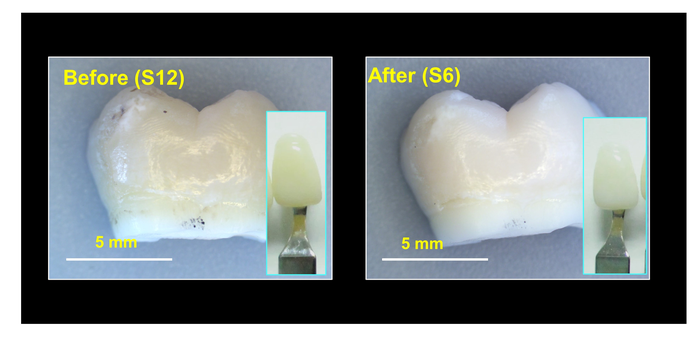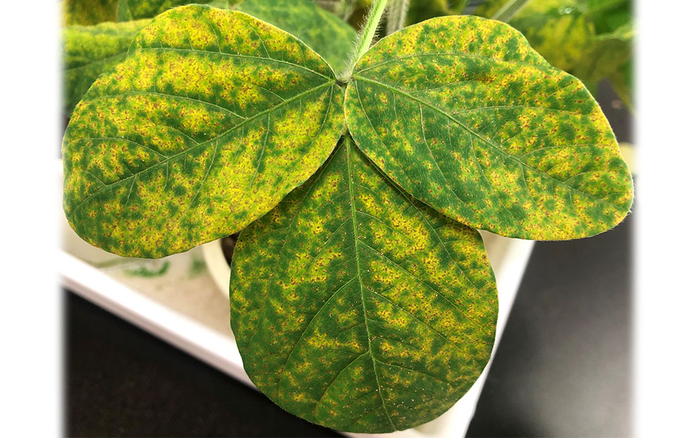As noted in the headline for this post, I have two items. For anyone unfamiliar with XR and the other (AR, MR, and VR) realities, I found a good description which I placed in my October 22, 2021 posting (scroll down to the “How many realities are there?” subhead about 70% of the way down).
eXtended Reality in Rome
I got an invitation (via a February 24, 2022 email) to participate in a special session at one of the 2022 IEEE (Institute of Electrical and Electronics Engineers) conference (more about the conference later).
First, from the Special Session 10, eXtended Reality as a gateway to the Metaverse: Practices, Theories, Technologies and Applications webpage,
ABSTRACT
The fast development of Virtual Reality (VR), Augmented Reality (AR), and Mixed Reality (MR) solutions over the last few years are transforming how people interact, work, and communicate. The eXtended Reality (XR) term encloses all those immersive technologies that can shift the boundaries between digital and physical worlds to realize the Metaverse. According to tech companies and venture capitalists, the Metaverse will be a super-platform that convenes sub-platforms: social media, online video games, and ease-of-life apps, all accessible through the same digital space and sharing the same digital economy. Inside the Metaverse, virtual worlds will allow avatars to carry all human endeavours, including creation, display, entertainment, social, and trading. Thus, the Metaverse will evolve how users interact with brands, intellectual properties, and each other things on the Internet. A user could join friends to play a multiplayer game, watch a movie via a streaming service and then attend a university course precisely the same as in the real world.
The Metaverse development will require new software architecture that will enable decentralized and collaborative virtual worlds. These self-organized virtual worlds will be permanent and will require maintenance operations. In addition, it will be necessary to design efficient data management system and prevent privacy violations. Finally, the convergence of physical reality, virtually enhanced, and an always-on virtual space highlighted the need to rethink the actual paradigms for visualization, interaction, and sharing of digital information, moving toward more natural, intuitive, dynamically customizable, multimodal, and multi-user solutions.
TOPICS
The topics of interest include, but are not limited to, the following:
Hardware/Software Architectures for Metaverse
Decentralized and Collaborative Architectures for Metaverse
Interoperability for Metaverse
Tools to help creators to build the Metaverse
Operations and Maintenance in Metaverse
Data security and privacy mechanisms for Metaverse
Cryptocurrency, token, NFT Solutions for Metaverse
Fraud-Detection in Metaverse
Cyber Security for Metaverse
Data Analytics to Identify Malicious Behaviors in Metaverse
Blockchain/AI technologies in Metaverse
Emerging Technologies and Applications for Metaverse
New models to evaluate the impact of the Metaverse
Interactive Data Exploration and Presentation in Metaverse
Human factors issues related to Metaverse
Proof-of-Concept in Metaverse: Experimental Prototyping and Testbeds
ABOUT THE ORGANIZERS
Giuseppe Caggianese is a Research Scientist at the National Research Council of Italy. He received the Laurea degree in computer science magna cum laude in 2010 and the Ph.D. degree in Methods and Technologies for Environmental Monitoring in 2013 from the University of Basilicata, Italy.
His research activities are focused on the field of Human-Computer Interaction (HCI) and Artificial Intelligence (AI) to design and test advanced interfaces adaptive to specific uses and users in both augmented and virtual reality. He authored more than 30 scientific papers published in international journals, conference proceedings, and books. He also serves on program committees of several international conferences and workshops.
Ugo Erra is an Assistant Professor (qualified as Associate Professor) at the University of Basilicata (UNIBAS), Italy. He is the founder of the Computer Graphics Laboratory at the University of Basilicata. He received an MSc/diploma degree in Computer Science from the University of Salerno, Italy, in 2001 and a PhD in Computer Science in 2004.
His research focuses on Real-Time Computer Graphics, Information Visualization, Artificial Intelligence, and Parallel Computing. Has been involved in several research projects; among these, one project was funded by the European Commission as a research fellow, and four projects were founded by Area Science Park, a public national research organization that promotes the development of innovation processes, as principal investigator. He has (co-)authored about 14 international journal articles, 45 international conference proceedings, and two book chapters. He supervised four PhD students. He organized the Workshop on Parallel and Distributed Agent-Based Simulations, a satellite Workshop of Euro-Par, from 2013 to 2015. He served more than 20 international conferences as program committee member and more than ten journals as referee.
As promised, here’s more about the conference with information about how to respond to the call for papers both for the special session and the conference at large. From the 2022 IEEE International Conference on Metrology for Extended Reality, Artificial Intelligence and Neural Engineering (IEEE MetroXRAINE 2022) website,
The 2022 IEEE International Conference on Metrology for eXtended Reality, Artificial Intelligence, and Neural Engineering (IEEE MetroXRAINE 2022) will be an international event mainly aimed at creating a synergy between experts in eXtended Reality, Brain-Computer Interface, and Artificial Intelligence, with special attention to measurement [i.e., metrology].
The conference will be a unique opportunity for discussion among scientists, technologists, and companies on very specific sectors in order to increase the visibility and the scientific impact for the participants. The organizing formula will be original owing to the emphasis on the interaction between the participants to exchange ideas and material useful for their research activities.
MetroXRAINE will be configured as a synergistic collection of sessions organized by the individual members of the Scientific Committee. Round tables will be held for different projects and hot research topics. Moreover, we will have demo sessions, students contests, interactive company expositions, awards, and so on.
The Conference will be a hybrid conference [emphasis mine], with the possibility of attendance remotely or in presence.
CALL FOR PAPERS
The Program Committee is inviting to submit Abstracts (1 – 2 pages) for the IEEE MetroXRAINE 2022 Conference, 26-28 October, 2022.
All contributions will be peer-reviewed and acceptance will be based on quality, originality and relevance. Accepted papers will be submitted for inclusion into IEEE Xplore Digital Library.
Extended versions of presented papers are eligible for post publication.
…
Abstract Submission Deadline:
March 28, 2022
Full Paper Submission Deadline:
May 10, 2022
Extended Abstract Acceptance Notification:
June 10, 2022
Final Paper Submission Deadline:
July 30, 2022
According to the email invitation, “IEEE MetroXRAINE 2022 … will be held on October 26-28, 2022 in Rome.” You can find more details on the conference website.
Council of Canadian Academies launches four projects
This too is from an email. From the Council of Canadian Academies (CCA) announcement received February 27, 2022 (you can find the original February 17, 2022 CCA news release here),
The Council of Canadian Academies (CCA) is pleased to announce it will undertake four new assessments beginning this spring:
Gene-edited Organisms for Pest Control
Advances in gene editing tools and technologies have made the process of changing an organism’s genome more efficient, opening up a range of potential applications. One such application is in pest control. By editing genomes of organisms, and introducing them to wild populations, it’s now possible to control insect-borne disease and invasive species, or reverse insecticide resistance in pests. But the full implications of using these methods remains uncertain.
This assessment will examine the scientific, bioethical, and regulatory challenges associated with the use of gene-edited organisms and technologies for pest control.
Sponsor: Health Canada’s Pest Management Regulatory Agency
The Future of Arctic and Northern Research in Canada
The Arctic is undergoing unprecedented changes, spurred in large part by climate change and globalization. Record levels of sea ice loss are expected to lead to increased trade through the Northwest Passage. Ocean warming and changes to the tundra will transform marine and terrestrial ecosystems, while permafrost thaw will have significant effects on infrastructure and the release of greenhouse gases. As a result of these trends, Northern communities, and Canada as an Arctic and maritime country, are facing profound economic, social, and ecosystem impacts.
This assessment will examine the key foundational elements to create an inclusive, collaborative, effective, and world-class Arctic and northern science system in Canada.
Sponsor: A consortium of Arctic and northern research and science organizations from across Canada led by ArcticNet
Quantum Technologies
Quantum technologies will affect all sectors of the Canadian economy. Built on the principles of quantum physics, these emerging technologies present significant opportunities in the areas of sensing and metrology, computation and communication, and data science and artificial intelligence, among others. But there is also the potential they could be used to facilitate cyberattacks, putting financial systems, utility grids, infrastructure, personal privacy, and national security at risk. A comprehensive exploration of the capabilities and potential vulnerabilities of these technologies will help to inform their future deployment across society and the economy.
This assessment will examine the impacts, opportunities, and challenges quantum technologies present for industry, governments, and people in Canada.
Sponsor: National Research Council Canada and Innovation, Science and Economic Development Canada
International Science and Technology Partnership Opportunities
International partnerships focused on science, technology, and innovation can provide Canada with an opportunity to advance the state of knowledge in areas of national importance, help address global challenges, and contribute to UN Sustainable Development Goals. Canadian companies could also benefit from global partnerships to access new and emerging markets.
While there are numerous opportunities for international collaborations, Canada has finite resources to support them. Potential partnerships need to be evaluated not just on strengths in areas such as science, technology, and innovation, but also political and economic factors.
This assessment will examine how public, private, and academic organizations can evaluate and prioritize science and technology partnership opportunities with other countries to achieve key national objectives.
Sponsor: Global Affairs Canada
Gene-edited Organisms for Pest Control and International Science and Technology Partnership Opportunities are funded by Innovation, Science and Economic Development Canada (ISED). Quantum Technologies is funded by the National Research Council of Council (NRC) and ISED, and the Future of Arctic and Northern Research in Canada is funded by a consortium of Arctic and northern research and science organizations from across Canada led by ArcticNet. The reports will be released in 2023-24.
Multidisciplinary expert panels will be appointed in the coming months for all four assessments.
You can find in-progress and completed CCA reports here.
Fingers crossed that the CCA looks a little further afield for their international experts than the US, UK, Australia, New Zealand, and northern Europe.
Finally, I’m guessing that the gene-editing and pest management report will cover and, gingerly, recommend germline editing (which is currently not allowed in Canada) and gene drives too.
It will be interesting to see who’s on that committee. If you’re really interested in the report topic, you may want to check out my April 26, 2019 posting and scroll down to the “Criminal ban on human gene-editing of inheritable cells (in Canada)” subhead where I examined what seemed to be an informal attempt to persuade policy makers to allow germline editing or gene-editing of inheritable cells in Canada.

